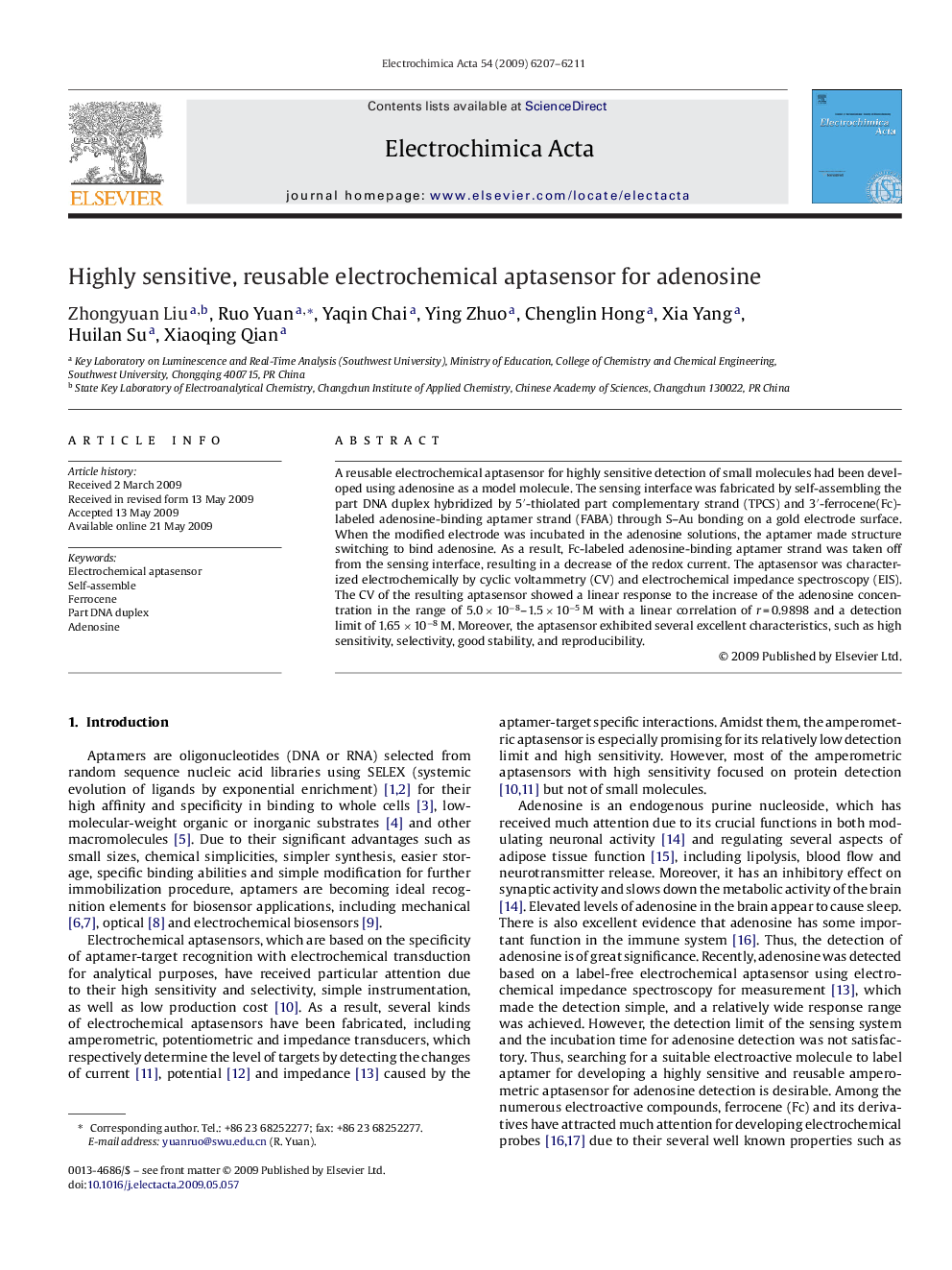| Article ID | Journal | Published Year | Pages | File Type |
|---|---|---|---|---|
| 193188 | Electrochimica Acta | 2009 | 5 Pages |
A reusable electrochemical aptasensor for highly sensitive detection of small molecules had been developed using adenosine as a model molecule. The sensing interface was fabricated by self-assembling the part DNA duplex hybridized by 5′-thiolated part complementary strand (TPCS) and 3′-ferrocene(Fc)-labeled adenosine-binding aptamer strand (FABA) through S–Au bonding on a gold electrode surface. When the modified electrode was incubated in the adenosine solutions, the aptamer made structure switching to bind adenosine. As a result, Fc-labeled adenosine-binding aptamer strand was taken off from the sensing interface, resulting in a decrease of the redox current. The aptasensor was characterized electrochemically by cyclic voltammetry (CV) and electrochemical impedance spectroscopy (EIS). The CV of the resulting aptasensor showed a linear response to the increase of the adenosine concentration in the range of 5.0 × 10−8–1.5 × 10−5 M with a linear correlation of r = 0.9898 and a detection limit of 1.65 × 10−8 M. Moreover, the aptasensor exhibited several excellent characteristics, such as high sensitivity, selectivity, good stability, and reproducibility.
